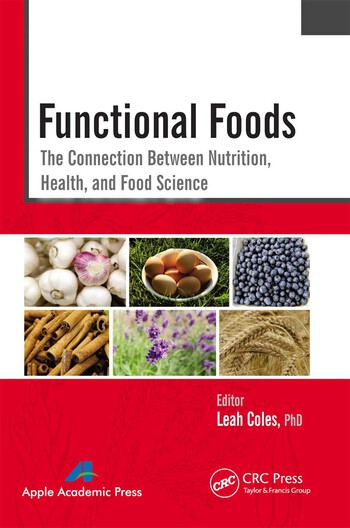The Science of Fatigue
Fatigue-fighters in foods, beverages and dietary supplements typically fall into two general categories: stimulants and adaptogens. Stimulants contain alkaloids—powerful compounds that act on the central nervous system to increase heart-rate, respiration and blood pressure. Their effect is temporary. Caffeine, the best-known stimulating alkaloid, is found in coffee, tea and many soft drinks, as well as in herbs, such as guarana and kola nut. Chronic consumption can lead to caffeine habituation, which, in addition to the obvious cautions that accompany this form of stimulation, lessens the energizing effect, leading the user to search for more energy.
Yerba maté, or simply maté (Ilex paraguariensis), is a stimulant herb that sometimes goes by the common name St. Bartholomew’s tea or Jesuit’s tea. It is rich in caffeine, theobromine and theophylline, plus a variety of nutrients and phytochemicals. It is promoted as a dietary supplement for weight loss, cardiovascular disease and cancer prevention because of its demonstrated antioxidant activity in vitro. Native to South America, where it serves as both social beverage and as traditional medicine, maté has demonstrated antioxidant activity and potential cardioprotective effects via regulation of nitric oxide in vitro. But, there are no large-scale clinical studies that confirm its efficacy in humans.
Adapting to Energy
Can herbs “fight fatigue” without caffeine? The quick answer is that many people think so, but there currently is no sufficient peer-reviewed journal evidence to allow the statement. For example, according to the authors of a paper titled “Traditional Chinese medicinal herbs for the treatment of idiopathic chronic fatigue and chronic fatigue syndrome,” published online in the Cochrane Database of Systemic Reviews (2009), all of the studies examining the use of traditional Chinese medicine’s herbal products for chronic fatigue had “methodologic limitations.” Many controlled trials conducted in China “did not utilize rigorous randomization procedures,” so they were excluded from the review. The authors concluded: “Improvements in methodology in future studies are required for meaningful synthesis of data.”
Herbs purported to produce long-lasting beneficial effects—including increased energy without caffeine—are referred to as “adaptogens.” An adaptogen is loosely defined as a metabolic regulator, a substance that enhances an organism’s ability to adapt to, and regenerate from, environmental stress. An adaptogen also, by definition, shows some non-specific effect; has a normalizing influence on a pathological state; and is innocuous and does not disturb body functions at a normal level, according to Brekhman and Dardymov in the Annual Review of Pharmacology. This definition is not generally accepted in the Western model of medicine.
In other words, although adaptogenic herbs haven’t been systematically tested in the manner that would convince the scientific community, they hold promise—because of, not in spite of, their indirect scientific evidence and centuries-old anecdotal support. But then, since herbs and their uses are often passed down by tradition, it’s understandable that rigorous testing lags behind the personal conviction and anecdotal evidence that supports their continued use and consumer loyalty. So, what herbs are credited with the ability to help relieve fatigue, and by what mechanism might they confer their action?
A recent article in the March 2012 International Journal of Food Sciences and Nutrition addressed that issue. The author evaluated studies of three herbs from traditional Chinese medicine: ginseng (Panax ginseng), hong jing tian (Rhodiola rosea) and wu wei zi or schisandra (Schisandra chinensis). Ginseng contains compounds called ginsenosides that demonstrate both stimulatory and inhibitory effects on the central nervous system. It also has anti-inflammatory properties and can enhance both humoral and cellular immunity. In addition, it has been used in the treatment of erectile dysfunction and has been shown to enhance cognitive ability.
Hong jing tian was found to reduce lactate levels and parameters of skeletal muscle damage after exhaustive exercise. Extracts from wu wei zi—also called “five-flavor berry”— have been shown in animal studies to promote myocardial contractility (without affecting blood pressure); stimulate respiration; induce uterine smooth-muscle contractions; and increase levels of hepatic glutathione (an endogenous antioxidant). In animal studies, it also showed an ability to help protect against hepatotoxicity.
Other herbs reported to have similar fatigue-fighting properties include Siberian ginseng, also known as eleuthero. This herb is used to support stamina and fitness in athletes, as well as to reduce general fatigue. Licorice root (Glycyrrhiza glabra, Glycyrrhiza uralensis) contains a variety of compounds, including glycyrrhizin, believed to account for some of its anti-cancer and anti-inflammatory effects. Licorice root is also believed to enhance cortisol activity, increasing energy and reducing fatigue. However, excessive use can lead to side effects, such as hypertension and edema.
* Gotu kola (Centella asiatica, Hydrocotyle asiatica)—referred to in some cultures as “the most spiritual of all herbs”—is revered in Ayurvedic (Indian) medicine for promoting health, energy, stamina and for reducing fatigue. Native to the Himalayas, it is used by yogis to enhance meditation. Sri Lankans believe this herb will promote long life.
* Ginkgo (Ginkgo biloba) is one of the oldest species of trees on earth. Both the seeds and the leaves of the tree are employed as part of traditional medicine to treat a variety of conditions, ranging from respiratory and circulatory disorders to sexual dysfunction and loss of hearing. In in vitro studies, extract of gingko exhibited chemopreventive and anti-cancer effects. Ginkgo is considered a prescription herb in Germany and, in fact, is the most frequently prescribed botanical medicine. It is recommended to reduce fatigue and memory loss and for protection from oxidative stress.
* Ashwagandha (Withania somnifera), “Indian ginseng,” is a root used in Ayurvedic medicine to enhance learning and memory, and to relieve stress, fatigue and pain. It also is used to treat diabetes, gastrointestinal disorders, rheumatoid arthritis, epilepsy and skin diseases.
Animal studies suggest ashwagandha possesses anti-inflammatory properties that offer protection against cartilage damage in osteoarthritis, along with anti-tumor, antioxidant and immunomodulatory abilities. In one study, an herbal tea containing ashwagandha increased the activity of natural killer cells in healthy volunteers who had recurrent coughs and colds, indicating an enhanced immune protection. Ashwagandha is rich in iron and, therefore, helps promote growth in children and improve hemoglobin level and red blood cell count—an ability that could account for some of its anti-fatigue reputation.
In vitro studies showed ashwagandha to reduce growth of cancer cells in breast, central nervous system, colon and lung tissues without affecting normal cells, but there are no data yet to indicate its potential effects on human cancer patients. Ashwagandha could help prevent chemotherapy-induced neutropenia; but that, too, has yet to be studied in human cancer patients. On the energy side, in 1993, a clinical trial was conducted in India of 50 otherwise healthy people complaining of lethargy and fatigue for a period of two-six months. Each subject ingested once daily a tonic comprised of 11 herbs, including 760mg of ashwagandha. Participants had not responded to a vitamin and mineral supplement taken for two months and had no recognizable disease. After one month, the patients reported an average 45% improvement in their moods.
Going Molecular
Other popular supplements working their way into foods include fatigue-fighting molecules which the body makes on its own. Creatine is one example. Synthesized in the liver and kidney, it’s transported to tissues with high-energy demands, such as brain and skeletal muscle. The concentration of the cell’s energy currency, adenosine triphosphate (ATP), in skeletal muscle is low, allowing for only a few seconds of muscle contraction. Creatine, as phosphocreatine, aids the muscle in resynthesizing ATP from adenosine diphosphate (ADP) to meet increased energy demands. This ability has made creatine a popular energy supplement. Once controversial, reports of kidney damage from long-term use have recently been refuted.
L-carnitine is part of a family of proteins that transport long-chain fatty acids into the mitochondria (the cell’s energy center), where they undergo beta-oxidation, the disassembly of fatty acids in preparation for their conversion to energy as ATP. This critically important job means fats can’t be converted to energy in the absence of L-carnitine. While deficiencies are rare in healthy individuals, depletion of normal L-carnitine levels can occur with age and various diseases. L-carnitine can be an important adjunct therapy when used as a supplement for persons with ischemic heart disease, where the heart muscle fails to get oxygen and suffers injury.
Coenzyme Q-10 (CoQ10) directly affects energy at the most basic level—the production of ATP from the food humans eat. CoQ10 is a critical component of the electron transport chain operating in all cells. To put it simply, no CoQ10 means no energy. For that reason, cells make more CoQ10 than they need to run the electron transport chain. But, that excess has a purpose: CoQ10 also functions as a potent antioxidant—working directly to halt free-radical damage or in conjunction with other antioxidants—aiding, for example, vitamin E. CoQ10, like L-carnitine, can diminish with age and disease, especially as many disease conditions (i.e., cancer) generate a great deal of potentially damaging free radicals.
The potential for creating food and beverages that target energy has increased exponentially. A new understanding of biochemical and botanical compounds meets with ingredient technology that allows these compounds to be included in tasty and refreshing formulations. NS
Looking for a reprint of this article?
From high-res PDFs to custom plaques, order your copy today!





